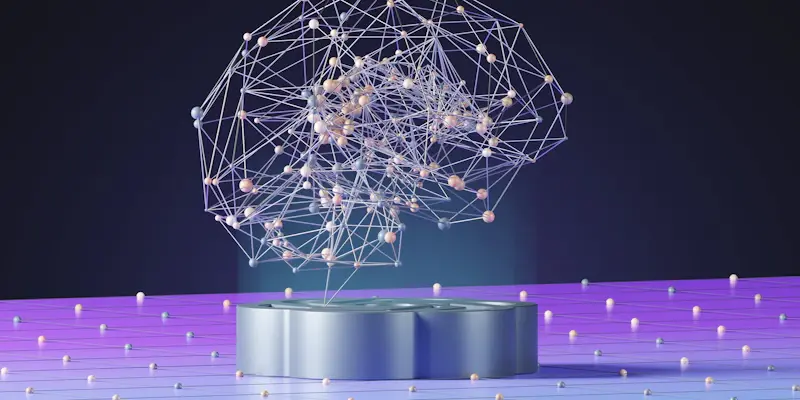OpenAI is making headlines again, this time with the announcement that their newest artificial intelligence model, o3, has purportedly achieved something groundbreaking: passing the Abstract Reasoning Corpus for Artificial General Intelligence (ARC-AGI) test. OpenAI’s CEO Sam Altman has declared that o3 has reached a new milestone in artificial intelligence, marking what the company believes to be the advent of artificial general intelligence (AGI). This achievement not only represents a tremendous scientific breakthrough but also opens the door to the next frontier – superintelligence. Altman explained that AGI is the point at which an AI achieves human-level intelligence, autonomy, self-understanding, and the ability to reason and perform tasks across various domains without specific training.
AGI, as described in the industry, is expected to mimic human cognitive abilities, enabling AI systems to operate with high flexibility and adapt to new tasks without explicit instructions. The ARC-AGI test, designed by AI researcher François Chollet, serves as an industry benchmark to measure an AI’s ability to generalize across unfamiliar tasks. This involves a deep understanding of abstract concepts like objects, boundaries, and spatial relationships. The test is an essential milestone for any AI model aiming to achieve AGI, as it provides a rigorous standard against which to measure true cognitive adaptability.
The Significance of the ARC-AGI Test
The ARC-AGI test presents AI systems with abstract grids or puzzles. These tasks involve identifying patterns and making logical connections to generate the correct output. For o3 to pass the ARC-AGI test, it demonstrated an unprecedented level of cognitive flexibility and problem-solving prowess. OpenAI’s achievement is notable as it ranks well above the established threshold for AGI, which requires a score of 85%. OpenAI’s o3 system achieved a high-compute score of 87.5%, surpassing the average human score of 80%. This notable score has caused quite a stir in the AI community, solidifying OpenAI’s place at the forefront of AI research and development.
In the blog post titled “Reflections,” Altman expressed confidence in OpenAI’s understanding and capability to build AGI as traditionally envisioned. He forecasts that by 2025, AI agents might not only join the workforce but also substantially impact productivity across industries. Despite the challenges of defining AGI, the general consensus is that it should mimic the cognitive abilities of highly skilled humans. This involves an autonomous system with human-like reasoning, the ability to learn and solve new problems independently, and enhanced decision-making capabilities. Altman highlighted that even though the path to AGI had been long and filled with skepticism, milestones like the ARC-AGI benchmark reinforce the potential feasibility of AGI.
Beyond AGI: The Pursuit of Superintelligence
However, OpenAI’s ambitions go beyond AGI and toward superintelligence – AI systems that significantly exceed human intellectual capabilities. Altman boldly suggested that superintelligent tools could revolutionize scientific discovery and innovation. Nonetheless, while pursuing these advancements, the company acknowledges the profound ethical and safety considerations that come with developing such powerful technologies. Altman called for a balanced approach that maximizes benefits while mitigating risks inherent in creating superintelligent AI systems.
Altman emphasized the need for a balanced approach that maximizes benefits while mitigating risks. This involves extensive safety testing, rigorous internal evaluations, external reviews, and collaborations with safety institutes. The importance of responsible development is made clear by Altman’s reflections on the journey since OpenAI’s inception in 2015, where the goal was to create AGI and ensure its broad benefits to society. Despite initial skepticism, the company has made significant progress, exemplified by the recent performance of their o3 model. To ensure the ethical alignment of superintelligence, robust guidelines and regulations need to be established to oversee its development and deployment.
Competing Benchmarks and Global Perspectives
The ARC-AGI benchmark is not without its competitors. For instance, Beijing researchers introduced the Tong test, which evaluates AGI based on dynamic, embodied physical and social interactions. This test underscores five essential characteristics: the ability to perform an infinite range of tasks, autonomous task generation, understanding human needs, causal reasoning, and participating in human-like interactions. These benchmarks are integral in assessing and validating the capabilities of AGI systems as they evolve. Comparing different benchmarks highlights the diverse approaches to measuring AGI and the multifaceted nature of intelligence.
OpenAI’s journey toward AGI has seen incremental steps, with notable moments along the way. In April 2023, Microsoft researchers claimed that ChatGPT exhibited “sparks” of AGI – an important indicator of its potential. This involved ChatGPT handling complex tasks such as math, coding, vision, medicine, law, and psychology without specific prompting. These “sparks” are indicative of the strides made in advancing AI technology toward general intelligence. The development of AGI is not merely a singular race but a global endeavor where each contribution pushes the boundary of what is technologically possible.
The Future of Work and Society
OpenAI’s announcement that their latest AI model, o3, has passed the Abstract Reasoning Corpus for Artificial General Intelligence (ARC-AGI) test marks a significant milestone in artificial intelligence. This achievement signifies what the company believes to be the advent of artificial general intelligence (AGI). AGI represents not only a major scientific breakthrough but also a move toward developing superintelligence. According to Altman, AGI is when an AI reaches human-level intelligence, autonomy, self-awareness, and the capacity to reason and perform tasks across a wide range of domains without specific training.
AGI is expected to emulate human cognitive abilities, allowing AI systems to adapt and function across new tasks without explicit instructions. The ARC-AGI test, designed by AI researcher François Chollet, serves as an industry benchmark to measure an AI’s ability to handle unfamiliar tasks. This involves understanding abstract concepts like objects, boundaries, and spatial relationships. Passing this test is a crucial milestone for any AI model aiming to achieve AGI, as it provides a rigorous standard for measuring true cognitive adaptability.

